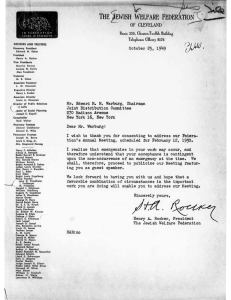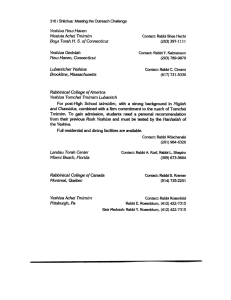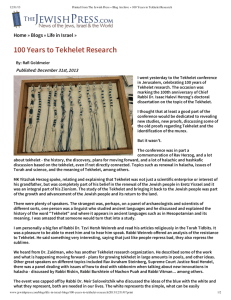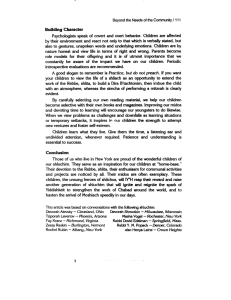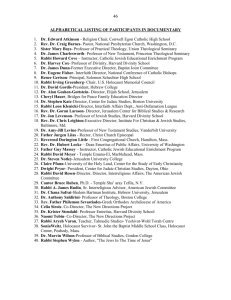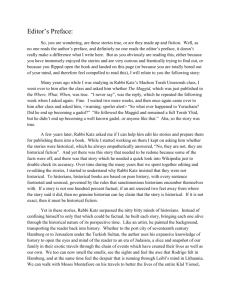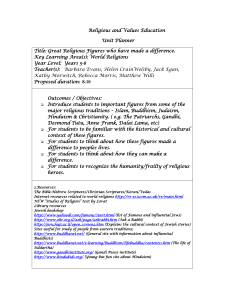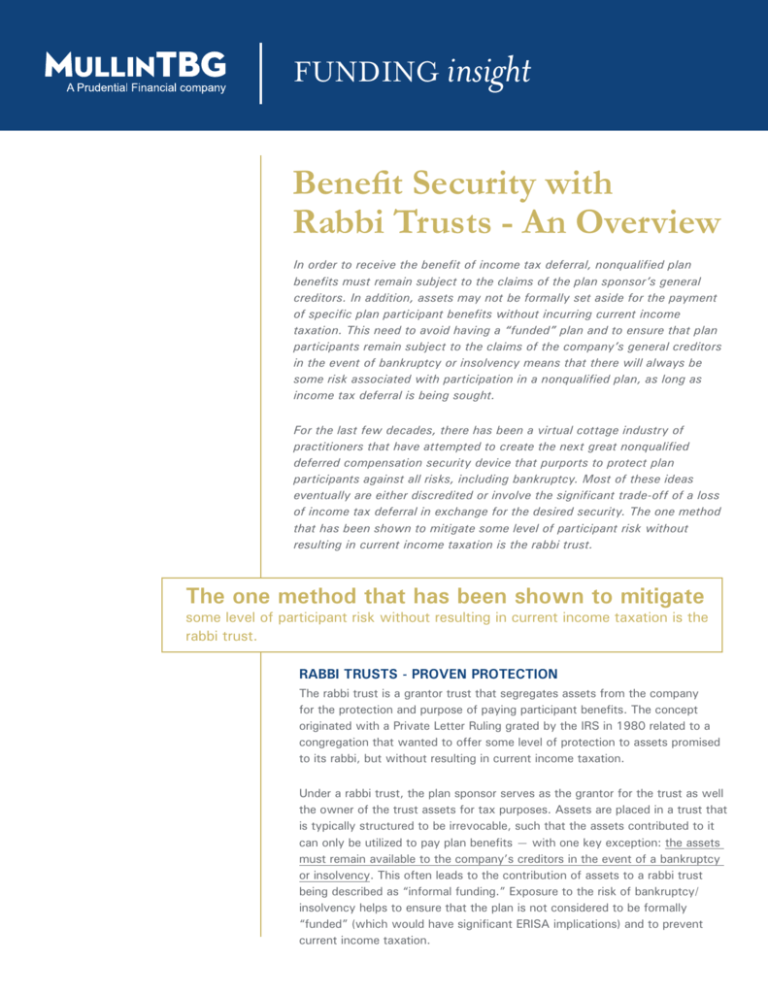
FUNDING insight
Benefit Security with
Rabbi Trusts - An Overview
In order to receive the benefit of income tax deferral, nonqualified plan
benefits must remain subject to the claims of the plan sponsor’s general
creditors. In addition, assets may not be formally set aside for the payment
of specific plan participant benefits without incurring current income
taxation. This need to avoid having a “funded” plan and to ensure that plan
participants remain subject to the claims of the company’s general creditors
in the event of bankruptcy or insolvency means that there will always be
some risk associated with participation in a nonqualified plan, as long as
income tax deferral is being sought.
For the last few decades, there has been a virtual cottage industry of
practitioners that have attempted to create the next great nonqualified
deferred compensation security device that purports to protect plan
participants against all risks, including bankruptcy. Most of these ideas
eventually are either discredited or involve the significant trade-off of a loss
of income tax deferral in exchange for the desired security. The one method
that has been shown to mitigate some level of participant risk without
resulting in current income taxation is the rabbi trust.
The one method that has been shown to mitigate
some level of participant risk without resulting in current income taxation is the
rabbi trust.
RABBI TRUSTS - PROVEN PROTECTION
The rabbi trust is a grantor trust that segregates assets from the company
for the protection and purpose of paying participant benefits. The concept
originated with a Private Letter Ruling grated by the IRS in 1980 related to a
congregation that wanted to offer some level of protection to assets promised
to its rabbi, but without resulting in current income taxation.
Under a rabbi trust, the plan sponsor serves as the grantor for the trust as well
the owner of the trust assets for tax purposes. Assets are placed in a trust that
is typically structured to be irrevocable, such that the assets contributed to it
can only be utilized to pay plan benefits — with one key exception: the assets
must remain available to the company’s creditors in the event of a bankruptcy
or insolvency. This often leads to the contribution of assets to a rabbi trust
being described as “informal funding.” Exposure to the risk of bankruptcy/
insolvency helps to ensure that the plan is not considered to be formally
“funded” (which would have significant ERISA implications) and to prevent
current income taxation.
FUNDING insight
A rabbi trust can ease security concerns
related to a plan sponsor having a “change
of heart” and refusing to pay a promised
benefit, and may also be able to mitigate
certain concerns related to a change in
control, but it does not eliminate the risk
associated with a corporate bankruptcy
or insolvency. The trade-off for this
loss of security related to a bankruptcy/
insolvency is that “informal funding”
through the use of a rabbi trust does not
lead to current income taxation, provided
the rabbi trust is structured to follow IRS
requirements.
A rabbi trust is the most common form
of security protection. According to
the
MullinTBG/PLANSPONSOR
2013
Executive Benefit Survey, of the companies
that utilize a security vehicle, 97% use a
rabbi trust (shown in the survey results
chart below).
RABBI TRUST DESIGN
The requirements for a rabbi trust were
first articulated by the IRS in the early
1990s. A “model rabbi trust” document
was provided at that time (Revenue
Procedure 92-64) and strict adherence to
the model provides a safe harbor that the
use of the trust will not result in income
taxation for the participant prior to
distribution. Based on the design options/
alternatives provided by the model and
in certain instances the incorporation of
additional features not discussed in the
model best practices for rabbi trusts have
been developed over the last twenty years.
While the IRS “model” trust permits a
rabbi trust to be structured as revocable
(i.e., the plan sponsor may pull out the
assets contributed as it desires), to provide
a level of security to plan participants
rabbi trusts are typically irrevocable.
As noted above, this would mean that,
once contributed, assets could generally
only be utilized to pay plan benefits (or
creditors, in the event of a bankruptcy/
insolvency).
One exception to the general irrevocability
requirement that has developed into a
common practice over time is to include
a “reversion” provision. A reversion
provision would permit the plan sponsor
to request that the trustee distribute
back to the sponsor excess trust assets,
to the extent the trust’s funding level
significantly exceeds the plan’s benefit
liabilities. A reversion provision of this
sort is typically structured to permit
the plan sponsor to request that excess
assets for example, above 125% of the
plan benefit-obligations, revert back to
the plan sponsor upon request. While this
feature is not part of the IRS model trust,
there has been relative comfort with the
inclusion of this provision for quite some
time (as noted above, the model does
permit a rabbi trust to be completely
revocable).
Another
important
provision
to
consider for an irrevocable rabbi trust is
reimbursement. It may be preferable in
certain instances for the plan sponsor to
pay plan benefits to participants directly,
rather than having the trustee process
the distributions. In those instances,
it will be important to ensure the trust
document permits the plan sponsor to
seek reimbursement for any plan benefits
it has paid directly; typically, some
evidence of payment of plan benefits is
necessary to receive trust reimbursement.
This is another example of a feature that
is not part of the IRS model trust, but has
become commonplace.
Change in control implications are yet
another area for consideration with regards
to a rabbi trust. Certain trusts have been
structured with a “no-fire” provision that
prevents the removal of the trustee for
some period of time following a change in
control, thus preventing the acquirer from
replacing a trustee with one that may be
more favorable to its interests. Similarly,
certain trusts are structured so that if
the trustee is removed or resigns within
some period of time following a change
in control, the departing trustee has the
power to select the replacement trustee,
thereby preventing new management from
selecting a new trustee once a change in
control is complete. A third trust design
feature related to a change in control
that is occasionally seen is a provision
that places restrictions on amendments
to the trust for a specified period of time
following a change in control.
Some practitioners also recommend the
inclusion of so-called “Moglia language.”
Based on a court case from 2003 (Bank
of America v. Moglia [330 F.3d 942,
7th Cir. 2003]), it is suggested here is
that, in certain circumstances, having
the trust document state that the trust
assets are only subject to the claims of
general creditors can be beneficial to plan
participants. The goal of this wording
is to prevent the secured creditors of a
company from having a claim against
assets in the rabbi trust, without
jeopardizing the income tax treatment of
the plan or having the trust be considered
“funded.” It is not entirely clear whether
the Moglia language would be successful
in achieving this outcome under facts
differing from those in the specific case
or in another judicial circuit.
SELECTING A TRUSTEE
Selecting an experienced and effective
trustee is a critical yet easily overlooked
step in the process. For example, a
nonqualified plan sponsor might select
a trustee on the basis of a banking or
other pre-existing relationship. Given
the unique nature of nonqualified plans
and rabbi trusts, it is important that the
selected trustee have direct experience
in this area, and not just offer these
services as an accommodation. It may be
important to ask potential rabbi trustees
about the number of nonqualified
plans they provide services for and the
company’s experience in dealing with
changes in control (and accompanying
changes in the operation of the trust). If
the plan sponsor is looking to incorporate
trust features that deviate from the
strict terms of the IRS model, it will be
important to verify that the trust/trustee
can accommodate the desired features.
FUNDING insight
SUMMARY
Nonqualified benefits can be an important component of executives’ retirement
planning. However, in order to preserve the benefits of income tax deferral,
participation in these plans require some level of risk. While the risk associated
with a corporate bankruptcy or insolvency cannot be eliminated without income tax
implications, a well-structured (and informally funded) rabbi trust can provide plan
participants with a means to mitigate certain risks associated with “change of heart”
or a change in control.
The materials are designed to convey accurate and authoritative information concerning
the subject matter covered. However, they are provided with the understanding that
MullinTBG does not engage in the practice of law, or give tax, legal, or accounting
advice. For advice in these areas please consult your appropriate advisors.
100 North Sepulveda Blvd., Suite 500, El Segundo, CA 90245, Tel: 310.203.8770 ©2012 MullinTBG. All Rights Reserved.
Insurance products offered through MullinTBG Insurance Agency Services, LLC (“MullinTBG”).
Investment Advisory Services provided by MullinTBG Advisory Services, LLC (“MullinTBG Advisors”), a Registered Investment Adviser and a subsidiary of MullinTBG.
Securities offered through M Holdings Securities, Inc., a Registered Broker/Dealer, Member FINRA/SIPC.
MullinTBG and MullinTBG Advisors are owned and operated independently from M Holdings Securities, Inc.

